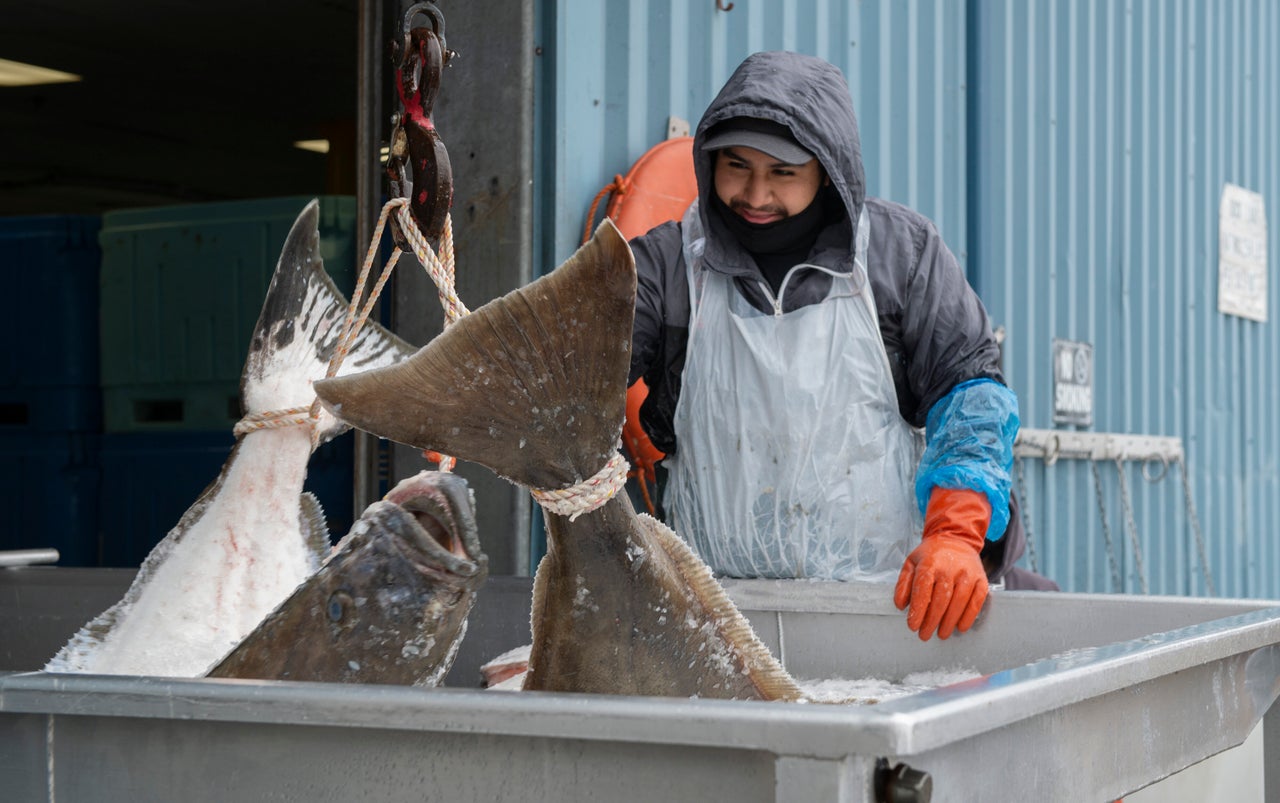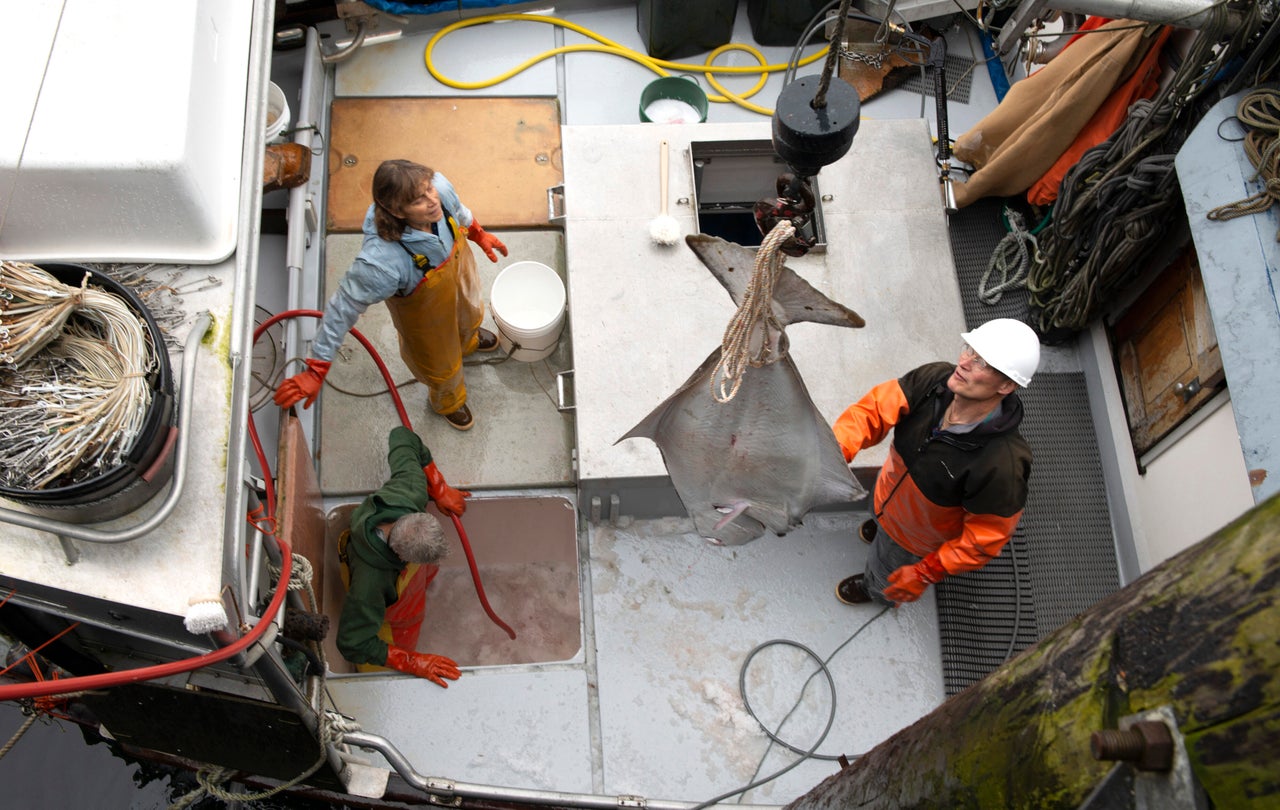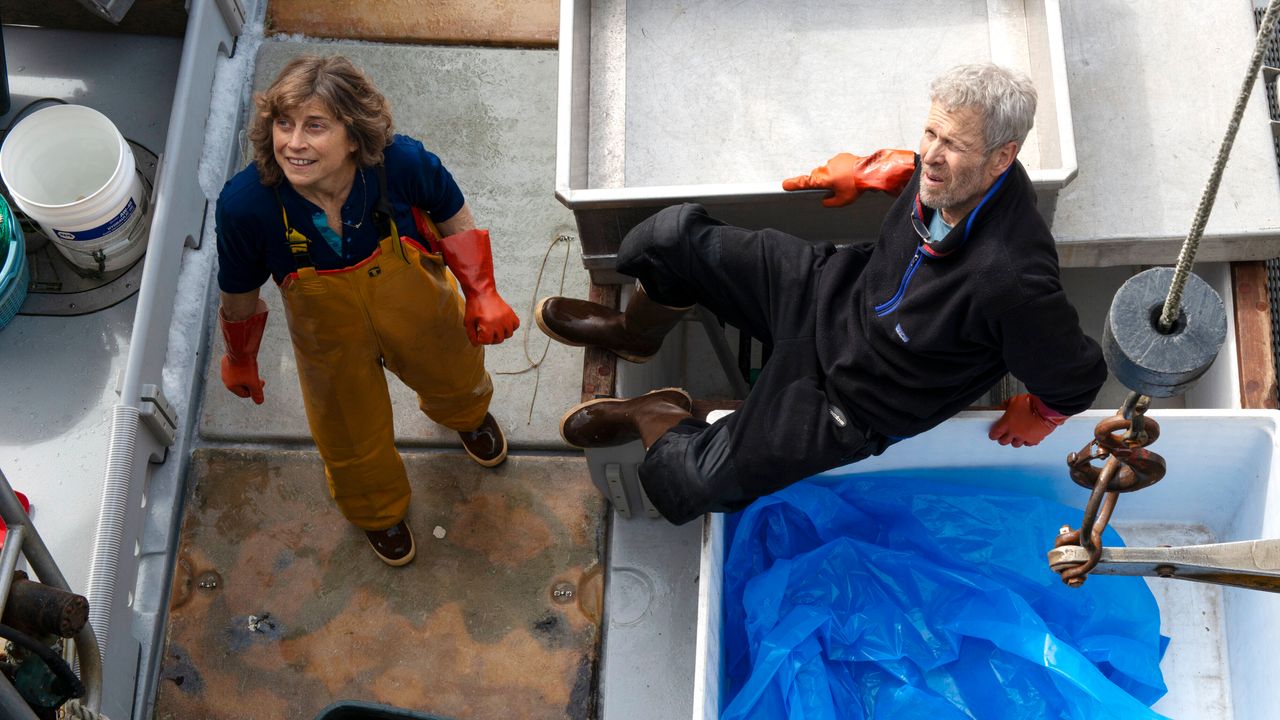One day in April 1991, a large fishing boat sliced through the cobalt waters of the North Pacific, not far from Sitka, Alaska, on its way to the Bering Sea. For some reason, perhaps to make sure its gear was in order, the boat dropped its weighted trawling net, dragging it across the ocean floor. As the boat drifted by, thousands of pounds of rockfish got scooped up in the mesh. Just like that, the local rockfish season was over.
“Outraged.” That is how Linda Behnken, a Sitka-based fisherman and director of the Alaska Longline Fishermen’s Association, described her reaction to news of the trawler’s nets rising from the ocean full of strangled or struggling fish, leaving the area’s fishing territory depleted. “It was a major catalyzing event.”
Facing the loss of a resource that had supported generations of fishing families, Behnken and the local community set out to protect the pristine waters of Southeast Alaska from the ravages of industrial fishing and banish trawling boats that drag wide nets to indiscriminately collect fish. A David to industrial fishing’s Goliath, Behnken was told to give up, that the cards were stacked against her. It took years of lobbying and rallying local support, but with the passage of the Southeast Alaska Trawl Closure in 1998, she had helped enact what at that time was the world’s largest ban on trawling, protecting 70,000 square miles of ocean habitat.
“The trawling ban is the reason we still have healthy small-scale fisheries in Southeast Alaska,” she said.
In the decades since, as the global fishing industry has consolidated into fewer, larger corporate fleets and environmental changes have threatened the ocean’s resources, Alaska’s Southeastern panhandle has emerged as a bastion for sustainable, small-scale fishing.
From Yakutat to Ketchikan, family-owned and -operated boats like Behnken’s “Woodstock” form the backbone of community-supported fisheries (CSFs) that often sell their catch directly to local customers and have lately seen a spike in orders from as far away as the Midwest and East Coast. Through their cooperative model, fishermen here have avoided exhausting ocean resources, protecting the marine biodiversity that keeps the ecosystem resilient to the mounting impacts of climate change. They’re also ensuring their own livelihoods; business is good even amid the turmoil of COVID-19 pandemic.
“No one wants to catch the last fish,” said Nic Mink, CEO of Sitka Salmon Shares, one of the more popular CSFs in southeast Alaska. “Our mentality is to take care of small boat fishermen that are harvesting with low-impact gear. They’re the best stewards of the resource.” Nationally, in the past eight years, the number of CSFs has jumped from around 20 to nearly 100, he said.
Here in Alaska’s southeast, the economy relies primarily on fishermen who own their own small boats and troll the water with lines and tackle, rather than raking the ocean with trawling nets. Policies, including localized caps on the amount a single operation can catch, as well as limits to a boat’s size, have been added to the trawling ban. These measures have kept industrial operations farther north, in the waters of central Alaska and the Bering Sea.
The southeast is unique in that, said Forrest Bower, deputy director of commercial fisheries for the Alaska Department of Fish and Game. It’s the only part of the state where salmon are caught commercially with hook and line, and fishermen here have earned a reputation for bringing in high-quality fish that serve a high-end consumer market.
Historically, Alaska’s fishing industry, which accounts for about 60% of the nation’s total seafood harvests and exports $3.3 billion worth of fish each year, has not prioritized family-owned operations that sell directly to customers. Even 10 years ago, when Mink started his CSF, there was still enormous pressure in the state to “get big or get out.” Big boats backed by big money can haul more catch and follow fish hundreds of miles farther out to sea than smaller operations.

But factory trawling boats, which account for about a quarter of global fishing production, can ensnare huge amounts of bycatch and wreak havoc on marine ecosystems by disturbing the seafloor and reducing biodiversity ― as Behnken saw firsthand back in 1991.
The results of her underdog victory against Big Fishing are apparent in the southeast today. This section of the North Pacific, which laps against the planet’s largest tract of undisturbed coastal temperate rainforest, is home to one of the world’s most productive marine ecosystems. It produces over 300 million pounds of seafood a year and typically leads the state in commercial salmon production by volume. Wrenching them from the ocean supports over 8,000 harvesting and processing jobs and brings an estimated $700 million total economic impact to a sparsely populated archipelago that makes coastal Maine look metropolitan.
Though still only a niche within the state’s greater fishing industry, CSFs like Sitka Salmon Shares and Alaskans Own — the state’s first CSF, which Behnken founded in 2009 — have become integral to many southeast communities. They function like community-supported agriculture, in which members buy “farm shares,” funding farmers’ operations and reaping bundles of produce in return.
Fishermen and women bait lines to catch fish, and keep them on ice until returning to port where they are processed and packed for delivery. Each month, customers collect boxes from pickup spots and farmers markets, or have them delivered directly to their doors thousands of miles away. Alaskan’s Own sells monthly shares starting around $100 that include any of five species of salmon, as well as black cod, crab, shrimp and other shellfish.
As with community-supported farms, boat owners can make more selling through the CSF than to an industrial supply chain diluted by a series of profit-skimming middlemen: processors, wholesalers, distributors and grocery stores. And customers, who appear more interested in the source of their seafood than ever before, know that their fillets were caught and cleaned by individuals invested in maintaining a healthy resource.

Still, as encouraging as the landscape in the southeast may be, it’s far from immune to the challenges threatening fisheries across the globe.
Logging is a big industry in Alaska, and clear cutting destroys forests that shelter salmon spawning in inland rivers. Open-pit mines, like the bitterly contested project proposed in Bristol Bay, can leak toxic waste into waterways. The ocean is acidifying and warming, which is drastically changing the timing and distribution of critical salmon runs.
“The Coho salmon season has been iffy this year, almost a total bust,” Mink said, referring to the species of salmon also called “silvers” that run in late summer. “Five years ago I couldn’t imagine a fishery like Coho shutting down, but I no longer think it’s off the table for us.”
Add to all that President Donald Trump’s trade war with China, which has driven the seafood business into downward-trending chaos. And, of course, the COVID-19 pandemic, which has sent shudders throughout the industry, resulting in a 50% drop in some fish prices, the Alaska Journal of Commerce reported.
“We’re seeing climate change impacts overlaid with pandemic impacts for a pretty tough season,” Behnken said.
But fishermen who sell direct to customers through CSFs have been insulated from some of the global market chaos. This year, as large supply chains have sputtered, many have experienced the same COVID-19-inspired shot in the arm that has buoyed CSAs and small-scale ranchers across the country. Alaskan’s Own has seen as much as a 30% increase in sales, with local customers buying more and new customers from across the country placing orders for the first time.
“Everyone’s been growing beyond their wildest imagination this year,” Mink said. “Our demand volume is up significantly, which has allowed us to bring down fixed costs and pay our fishermen more than we ever have.”
And they have not hoarded their winnings. In this wildly remote and rugged terrain, the salmon can run strong in one watershed and poorly in the next. Along the Southeast panhandle, some communities that depend heavily on fisheries for subsistence have seen historically low returns. In response, Behnken and many others in the Southeast’s fleet have together donated tens of thousands of pounds of fish to help them. Community support is a feedback loop — a give and take as critical at home as it is in the sea.
HuffPost’s “Work In Progress” series focuses on the impact of business on society and the environment and is funded by Porticus. It is part of the “This New World” series. All content is editorially independent, with no influence or input from Porticus. If you have an idea or tip for the editorial series, send an email to thisnewworld@huffpost.com.
